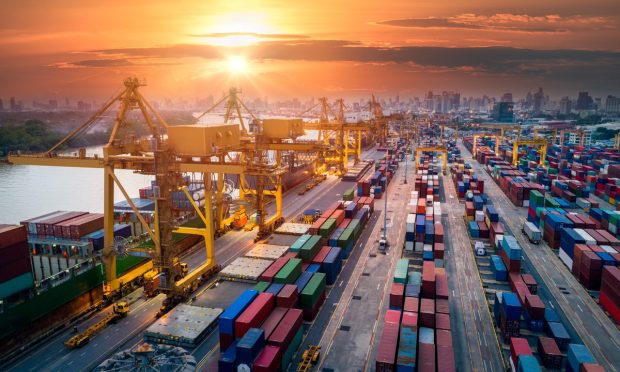Retailers Brace for Fresh Supply Chain Disruption From West Coast Ports

By the end of this week, 20,000 dock workers spread across 29 different West Coast shipping ports will either have a new contract or not.
With the current union pact, which has already been extended once, set to expire at midnight on June 30, what happens next is anyone’s guess.
What is known for sure, however, is that any work stoppage or disruption at the busiest shipping port in the world’s biggest economy would only worsen an already stretched and stressed supply chain problem that’s been tested and re-tested for the past two years.
The impending deadline on the docks is a risk that observers both inside the shipping industry and outside of it — including countless retailers who rely on imported goods — have been watching creep forward like a slow-moving barge, while hoping and praying for some sort of last-minute solution to the present impasse.
“It is imperative that a final contract is reached that avoids any supply chain disruptions,” the Retail Industry Leaders Association said earlier this month in an open letter to President Biden urging him to engage in the negotiations to ensure further backups, delays, and inflationary costs are avoided.
Failing that, the trade group, along with 48 other industry signatories, said any delays would only exacerbate existing supply chain challenges which, in turn, would strike another blow to the U.S. economy, and the hundreds of millions of individual consumers, importers and exporters with ties to this issue.
“Even a relatively brief port slowdown or shutdown would compound current supply chain challenges and cause long-lasting damage to consumer confidence and American businesses,” the group’s public plea added, before encouraging both parties to remain at the table until an agreement is reached.
The problem is, history suggests otherwise as the Journal of Commerce pointed out in an emailed newsletter nearly six weeks ago when the latest round of talks was just getting underway, noting that since the 1990’s “there has not been a single contract negotiation between the dockworkers and employers that hasn’t resulted in some disruption at West Coast ports.”
Nike’s View
It is amid this backdrop that Nike will take center stage Monday (June 27) afternoon when it reports its fiscal Q4 earnings results. Like all multinational retail brands and manufacturers, supply chain workarounds and alternative shipping arrangements have played an increased role within companies operational planning since the start of COVID.
In fact, Nike CFO Matt Friend said while rampant inflation and COVID-related retail and manufacturing disruptions in Asia were factors in Q3, supply chain constraints were more impactful, noting that growth would have been even higher than 5% if the company had had more available inventory to meet marketplace demand.
While “inventory supply in our geographies is beginning to improve,” Friend told analysts, “transit times, however, remain elevated, and in the case of North America, transit times [for the three months ending Feb. 28] have worsened.”
Despite these ongoing challenges within a dynamic and rapidly changing environment, Friend said Nike had been able to mitigate its transit delays by nearly four weeks compared to industry averages. Even so, Friend said Nike was working to make sure its advance ordering lead times would not increase even further.
To be sure, Nike is not alone in trying to find creative solutions that use new technology and routes to alleviate its supply chain challenges, at a time when rivals such as Under Armour have buckled under the same pressures. At the same time, Costco told investors in March that it had leased seven cargo ships with containers for the next three years in the face of its own freight and inventory challenges, a move that covers about one-quarter of its Asian import needs to the U.S. and Canada.
As a result, Nike’s supply chain update will be closely monitored by peers, rivals and even unrelated importers Monday afternoon, who will be eager to hear what sort of contingency shipping plans the company is making, and how much extra they might cost, in light of the port problem on the West Coast that could be about to get worse.